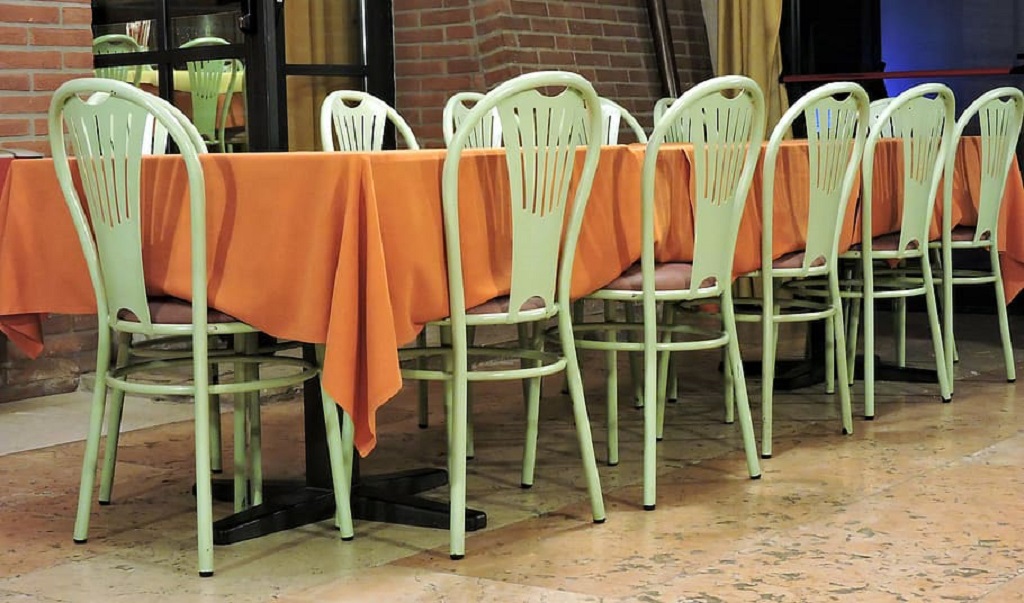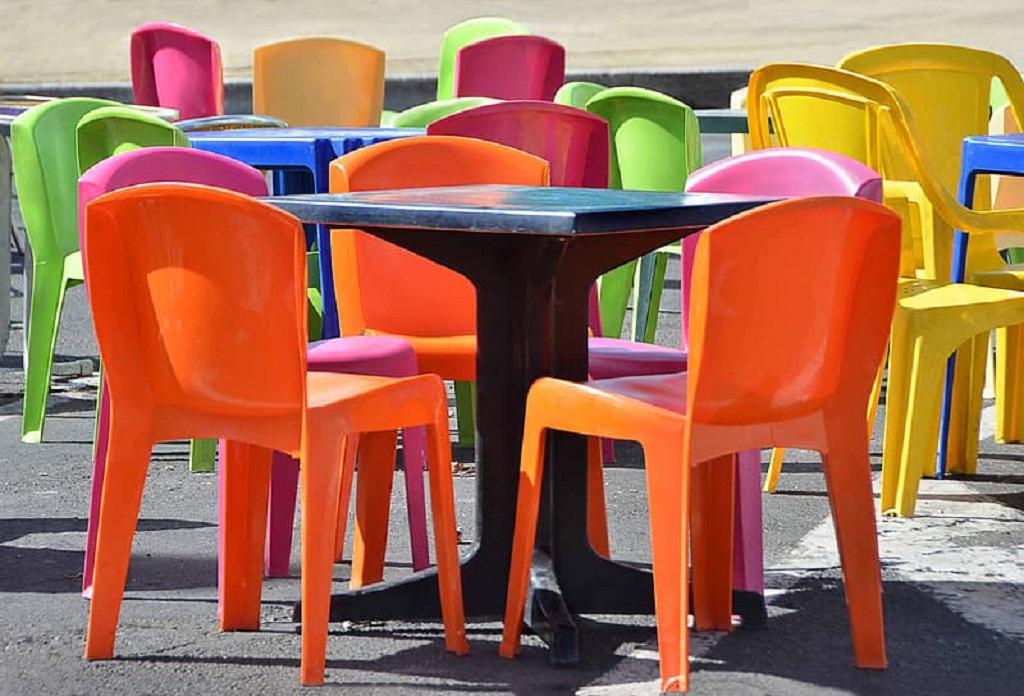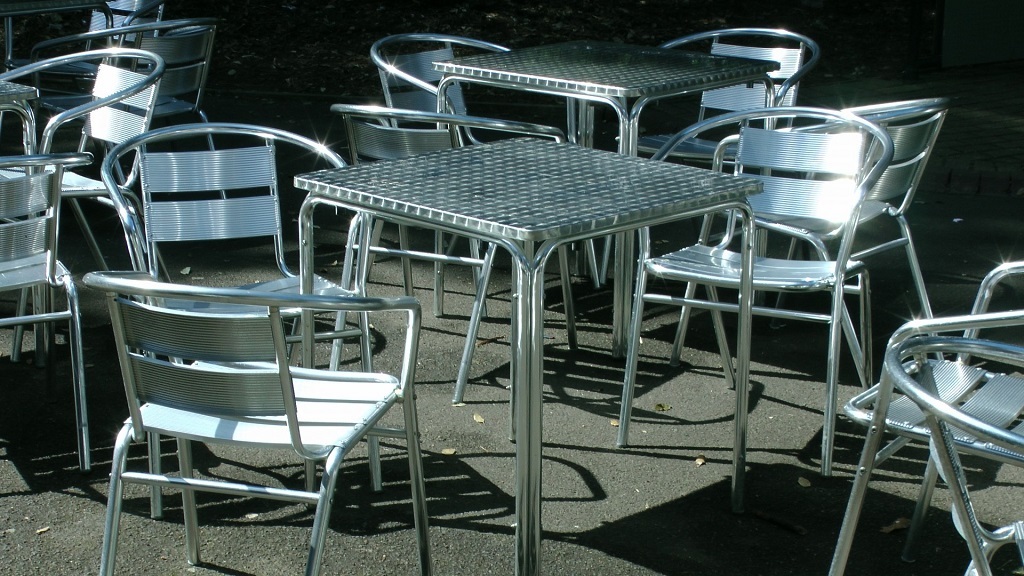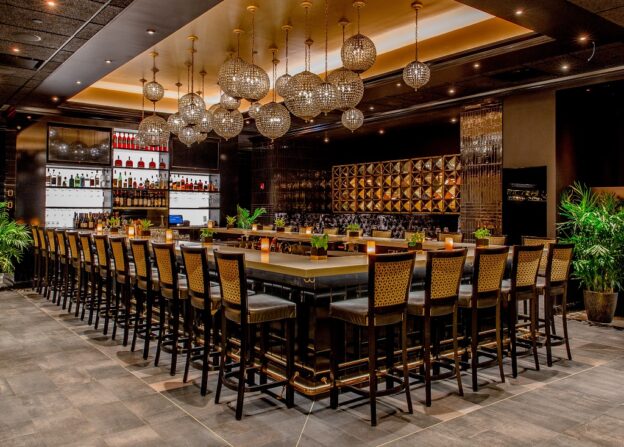Selecting the perfect furniture for your restaurant sets the tone of the dining experience. Before your guests can order or taste the food, your restaurant’s ambiance, along with the furniture, can tell customers a lot about the quality they should expect. The furniture and restaurant furniture materials at your restaurant should be durable yet light-weight, visually appealing yet functional, high-quality yet budget friendly.
Pros and Cons of Restaurant Furniture Material
From heavy iron-cast metallic to light-weight aluminum, from plastic to wooden, Restaurant furniture come in many different materials from cast iron bases, to aluminum chairs and bar stools and metal or wood tables. Each material has its advantages and disadvantages. Let’s discuss each of these materials in detail and look into their merits and demerits:
1. Metal Furniture:
Probably the most durable material, restaurants have been using metal restaurant furniture for quite a while now. Due to high tensile strength, aluminum or steel metal furniture fits in a variety of restaurant styles and is an excellent material for use in restaurants.

Pros:
- One of the strongest materials for manufacturing restaurant furniture and welded joints add to durability.
- Metal chairs and tables are a budget friendly option.
- Many outdoor metal chairs are stackable.
- Outdoor metal chairs are lightweight and easy to move or store when not in use.
- Painted metals are difficult to chip or scratch.
Cons:
- Some metal table and chair styles are prone to react with moisture and are not suitable for outdoors. Look for metal styles such as aluminum specifically rated for outdoor use.
- Their simple design may not be the best option for some restaurant styles.
2. Plastic Furniture:
Plastic is a very common material for restaurant furniture. Mass-production of plastic chairs and tables make them budget-friendly.
Polypropylene and polycarbonate are the common choices for plastic furniture. While polycarbonate is tough and durable, some polypropylene can be cheap and light in weight. Using plastic furniture adds versatility to your restaurant.

Pros:
- Plastic chairs and tables are available in a variety of forms, colors, and patterns.
- Light-weight
- Easy to stack and maintain.
- Plastic furniture provides value for your money.
- Since plastic furniture is available in volumes, there is a color and style for every budget.
Cons:
- Plastic tables lack strength.
- Plastic furniture can be scratched
- If using outdoors, check the weight of your plastic chairs if you’re in a very windy location as they are susceptible to be blown by strong winds.
3. Aluminum Furniture:
Aluminum is another popular material for restaurant tables and chairs. It offers the perfect mix of lightweight plastic and the strength of a metal. Aluminum furniture is available in either natural or painted finish to go with your restaurant’s interior. Moreover, you can use aluminum furniture indoor as well as outdoor. Due to its versatility, durability, and cost-effectiveness, aluminum is often the go-to choice for restaurants in all price ranges.

Pros:
- Resistance to corrosion or rusting makes aluminum an excellent material for outdoor setup.
- Since they are light-weight, you can easily maneuver them according to your requirements.
- Aluminum furniture is easy to maintain and use.
- They are attractive and cost-effective.
Cons:
- Aluminum furniture may not match the ambiance of some fine dining restaurants.
- Aluminum can feel cold to sit on to some customers if your restaurant is in a chilly location.
4. Wood Furniture:
Wood furniture has always had visual appeal and old-world charm. Oak, ash, teak, pine, and beech wood are some of the common timber types used for commercial furniture. As technology evolves, much of the furniture manufacture process is automated these days. This means wooden furniture is available in several surface finishes and stain colors to meet the aesthetics of your restaurant.
For example, you can use wood restaurant table and chairs to create a rustic look in your restaurant. Whether you opt for lighter-colored wood or its darker hues, it is pleasing for your guest’s eyes.

Pros:
- Wood restaurant tables appear elegant and increase the restaurant’s ambiance
- Wooden furniture is durable and lasts long.
- Wooden furniture, being a natural material, creates a warm tone to your restaurant and a welcoming setup.
Cons:
- They can react with water or other liquids so routine cleaning and maintenance are recommended.
- Some wood restaurant chairs are heavier than other materials.
- Only certain wooden furniture such as teak is suitable for outdoors.
- Some woods can be easily scratched so be sure to check with your vendor about a protective finish sealer.
The Bottom Line:
While selecting the furniture of your restaurant, it depends on your preference, the restaurant’s ambiance, and the theme you want to create. While a particular material might work for your competitor, it might not go well with your restaurant’s interior. Rather than following a random design trend, evaluate your requirements by considering your budget, clientele, location, etc. Restaurant furniture should be a nice mix of quality, appearance, and functionality.
The article discusses different materials available for restaurant furniture along with their pros and cons. Each material has been in use for quite some time now and is widely available in different shapes, sizes, finishes, colors, and designs. Hopefully, the comparison given in this article helps you in finding the best furniture for your restaurant.

